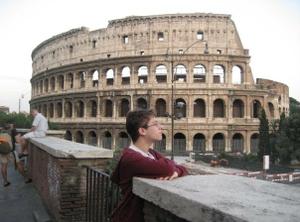Splash Biography
JAMES LEVINSOHN, ESP Teacher
|
Major: Art History College/Employer: UChicago Year of Graduation: 2012 |

|
Brief Biographical Sketch:
I was born and raised in the suburbs of North Jersey, a short distance from both New York and Newark. In elementary school, I first started drawing maps of imaginary lands like Oz and Narnia, and then progressed to re-imagining my town and the nearby towns, as I had seen them represented in my local street atlas. That began my infatuation with geography. Since then, I've ransacked Wikipedia, Google Maps, Rand McNally, travel guides, message boards, architecture books, and academic literature to feed my appetite for knowledge of place, space, and how people relate to them, particularly in the realm of the planned urban environment. In my spare time, I enjoy taking long walks in Chicago, visiting art museums and supermarkets, driving Toyotas, talking on the phone, complaining, drinking ginger ale and coffee (not together), eating dairy products, sniffing flowers, making lists, and reading Nabokov and the National Enquirer. My other interests, besides geography, include fine art (particularly painting), retail, consumerism, Jewish history and identity, classic and/or kitschy movies, society (broad term), American popular culture (in particular sitcoms), literature that is not literature of ideas (although I wish that I read as much as I used to), and popular music produced between 1965 and 1990, particularly if it's somewhat similar to either Joni Mitchell or Prince. Past Classes(Clicking a class title will bring you to the course's section of the corresponding course catalog)C458: Geography of Chicago in Splash! Fall 2009 (Oct. 03, 2009)
This course will discuss the spatial development of Chicago. Developments and phenomena that it will discuss include industrialization, suburbanization (and the suburbanization of Chicago's economy), immigration, Chicago's "global" and "national" status, gentrification, urban decay and renewal, and social stratification through space. Chicago will be used as a model to discuss developments in American urban geography as a whole, although its divergence from the typical model will also be discussed.
|
|
